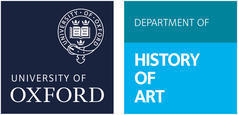Third Year (Final Honours)
Undergraduate Thesis
Individual research project supervised one-on-one by expert tutors
Please note that not all options are available in any given year - the ones given below are examples. The content and format of this course may change in some circumstances. Read further information about potential course changes.
Papers 5 and 6: Special Subject and Extended Essay in Art History (choose one)
The city-republics of Venice and Florence around 1500 have continued ever since to influence both the political and the visual culture of the western world. Each experimented with republican ideals, and each produced powerful myths, in text and image, of its own significance. Both, additionally, claimed a cultural primacy based on artistic styles. Most potent has been Giorgio Vasari’s triumphalist account of Florentine art: the course gives an opportunity to dissect this influential Tuscan myth, and to compare it with its Venetian rival. The prescribed sources include both art writing of the period and a number of paintings. The course is not confined to the ‘high’ arts, and embraces a broader view of material culture, taking into consideration the market for objects and their social uses. Social distinctions (and their visual markers) will be studied, particularly in relation to gender and to migrant communities. The set texts additionally focus questions about the true relationship of Renaissance culture to Antiquity, the place of religion in this supposedly secularizing society, and changing views of human nature.
This subject deals with an outstanding period in the history of English architecture – that of Wren, Hawksmoor, Talman and Vanburgh: the period generally known as that of ‘the English Baroque’. It saw the building of St. Paul’s Cathedral, the London churches, Greenwich Hospital, several royal palaces, most notably Hampton Court, the remodelling of the State Apartments at Windsor, and many important country houses, including Blenheim, Chatsworth and Castle Howard. Besides documents relating to the design and construction of these buildings and to the architectural thought of the time, the set texts include contemporary engravings and architectural drawings. Interior decoration and garden design may also be studied. The graphic side of the subject is as important as the documentary, and a good visual memory is desirable. No technical knowledge of architecture is necessary and the requisite knowledge of the classical orders and of foreign influences is not difficult to acquire.
This Special Subject is designed to enable students to study a wide range of artistic production in France in the period from the post-Napoleonic restoration to the international exhibition in Paris of 1867. This is an exciting period, in which most of the contours of French artistic life were subject to debate, and in which artists responded closely to contemporary political and social developments. In turn, reviews of salon exhibitions and art criticism in general provided a context for lively discussion of aesthetic and ideological concerns. The role of the state – as patron and arbiter of artistic production – was contested, as were the structures of artistic education; a series of political revolutions was refracted in visual culture; urbanization raised questions about landscape and the relations between town and country, and provided new theatres for visual display



